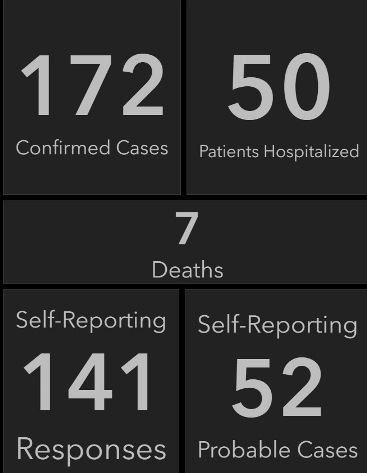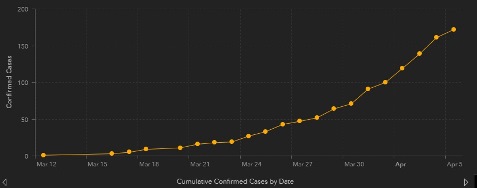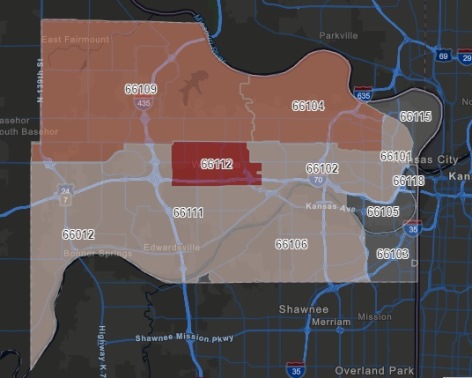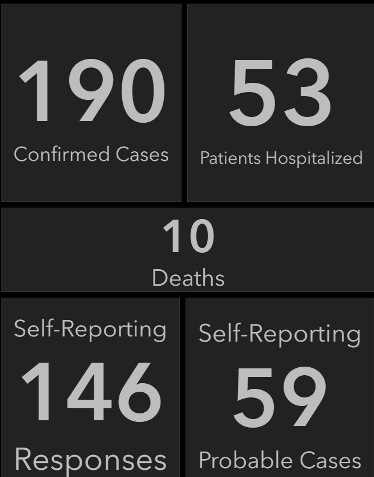
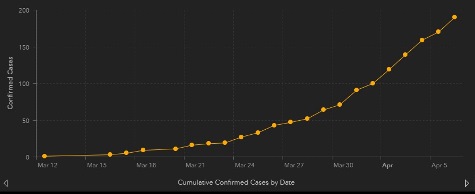
There were three more COVID-19 deaths reported on Tuesday morning in Wyandotte County, according to the Unified Government Health Department’s COVID-19 webpage.
The number of deaths increased from seven on Monday to 10 on Tuesday. There were 190 positive COVID-19 cases and 53 patients hospitalized, according to the UG’s COVID-19 page. There were 190 positive COVID-19 cases in Wyandotte County on Tuesday morning.
On Monday, the Kansas Department of Health and Environment reported 845 positive cases in the state.
Doctors emphasize good hygiene
Doctors at the University of Kansas Health System on Tuesday continued to emphasize good hygiene, staying at home, washing hands and keeping at least six feet away from others.
They had about 33 to 35 positive COVID-19 patients at the University of Kansas Health System on Tuesday, and recently had some discharged patients, according to Dr. Dana Hawkinson, medical director for infection control. There were around nine patients on ventilation, with some coming off ventilation recently.
According to Dr. Steve Stites, chief medical officer at KU Health System, they have not hit a surge yet, and are currently in good shape with the number of ventilators.
Dr. Hawkinson said he hoped that they would continue to flatten the curve.
He said KU Health System is participating in some trials of medications to see how effective and safe they are.
Doctors also said they are seeing some reductions in hospital admissions for patients in the health system. Some elective surgeries have been canceled.
On Tuesday, the doctors’ presentation included information about mental health hospital facilities available for youth, and the importance of having advance planning for care in case of emergencies.
Dr. Mitchell Douglas, medical director of the Marillac Center, said the number of youth coming to the center is down during this coronavirus epidemic, but the number who have attempted suicide is up. He said some families may be afraid to bring family members in to the hospital currently because of the fear of coronavirus. He urged parents who are concerned about their adolescents to call a helpline, doctor or a health facility.
He said measures are in place at the hospital to mitigate the risk of the coronavirus spreading. Temperatures are checked, visitors are limited, surfaces are cleaned, staff members are wearing masks and social distancing is taking place, he said.
Dr. Karin Porter-Williamson, director of palliative care for the KU Health System, said they are trying to overcome how hard it is for patients to be separated, and using telemedicine to bring families together. She said one of the most important things to do currently is to talk to loved ones about what is important in their living, maintain a connection with them, talk to doctors about management of any disease they have, and what concerns the doctors would have if they became sick from COVID-19.
“The more people can do to prepare themselves and their loved ones in this way is really important now,” she said.
Triage protocols also were discussed. If a time comes when health care is out of resources to help, a coalition of medical providers, medical ethicists, nurses and other professionals will be working to say how they can save as many lives as possible in a horrible situation, she said. Kansas and the military already have such guidelines, according to the doctors.
To view the doctors’ video news conference, visit https://www.facebook.com/kuhospital/videos/525731598374443/
The Unified Government’s COVID-19 website is at https://www.wycokck.org/COVID-19.
To view Kansas Department of Health and Environment COVID-19 information, visit
https://public.tableau.com/profile/kdhe.epidemiology#!/vizhome/COVID-19Data_15851817634470/KSCOVID-19CaseData.
Information from the Centers for Disease Control is online at
www.cdc.gov/coronavirus/2019-nCoV/.




